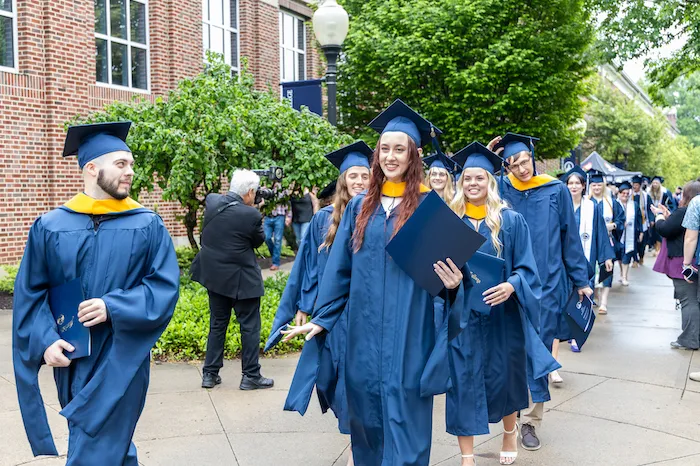
Marietta College continues to climb in one of the most prestigious lists in higher education: The Wall Street Journal/Pulse Rankings 2025 Best Colleges in the U.S.
Achieving the No. 5 spot in Ohio overall, Marietta College also ranked 4th in Student Experience, Best Salaries, and Social Mobility — outpacing all of Ohio’s public institutions. Marietta also is listed 5th statewide in Best Value.
Nationally, Marietta College significantly improved its standing, ranking 289th among 500 institutions — up from last year’s 304th spot.
“We are pleased that Marietta College has been recognized as one of the best colleges in the U.S. and as one of the top 5 ranked colleges/universities in the state of Ohio,” said President Margaret L. Drugovich. “Our place in these rankings is but one demonstration of the continued relevance, value and impact of a Marietta College education. Marietta educators have been opening minds to the power of inquiry student after student, class after class, for 189 years. Marietta’s tradition of excellence has been, and will continue to be, the gateway to a future filled with promise.”
The Student Experience ranking reflects the quality of its campus facilities, including food, housing, and extracurriculars, as well as its strong sense of community, emotional and mental health support, sustainability, campus safety, and social scene. It also considers the college's diversity in terms of ethnicity, support for students with lower family incomes, and inclusion of students with disabilities. The Best Salaries ranking reflects how well Marietta boosts graduates' salaries and how quickly the cost of attending is paid off through increased earnings. Social Mobility highlights colleges that best improve their students' social mobility. It recognizes schools that admit the highest proportion of students from low-income households, achieve high graduation rates, boost graduate salaries, and keep attendance costs low. Best Value rates schools’ “Years to pay off net price” — how quickly graduates' salaries pay back the net price of a four-year education compared to comparable high school graduates.
The WSJ overall rankings, developed in collaboration with College Pulse and Statista, scored colleges on Student Outcomes (70%), Learning Environment (20%), and Diversity (10%).
The ranking measured how well institutions prepare graduates for financial success, and how each “improves students’ chances of graduating and their future earnings, balancing these outcomes with feedback from students on college life.”
The WSJ article states, “The colleges in this ranking have found many ways to set their students up to succeed. To name just a few: Some schools have extensive, highly engaged alumni networks that ease graduates’ career paths; some work extensively with area businesses to put students in real-world environments before graduation; and some have developed in-classroom curricula that can adapt to the changing array of skills most desirable in the labor market.”
At Marietta College, students can access the Center for Entrepreneurship and Career Development (CEDC) for life, just one of the value-added aspects of attending MC.
Dr. Jackie Khorassani, Senior Director of Marietta’s CEDC, has an impressive list of professional development opportunities for students, including professional development events such as Speed Connect, Job Market Prep Mini-Series, and Marietta Mingle, which facilitates networking between current students and alums.
Additionally, Marietta’s CEDC offers students an array of entrepreneurship and career development opportunities, including informational sessions about applying to federal government jobs, speed mock interviews, effective professional communication, resume writing, and internship opportunities with various corporations.
Some of Marietta’s recent outcomes include 99% of Marietta’s December 2023 graduates were employed, in graduate school, or participating in a fellowship or service commitment within three months of graduation. For May 2023 graduates, another impressive feat just four months after graduation is the 48 students from five programs — Biochemistry, Graphic Design, Petroleum Engineering, and two of the Teacher Education tracks — all were employed in their field or enrolled in graduate school. The average salary for those working was $61,202.